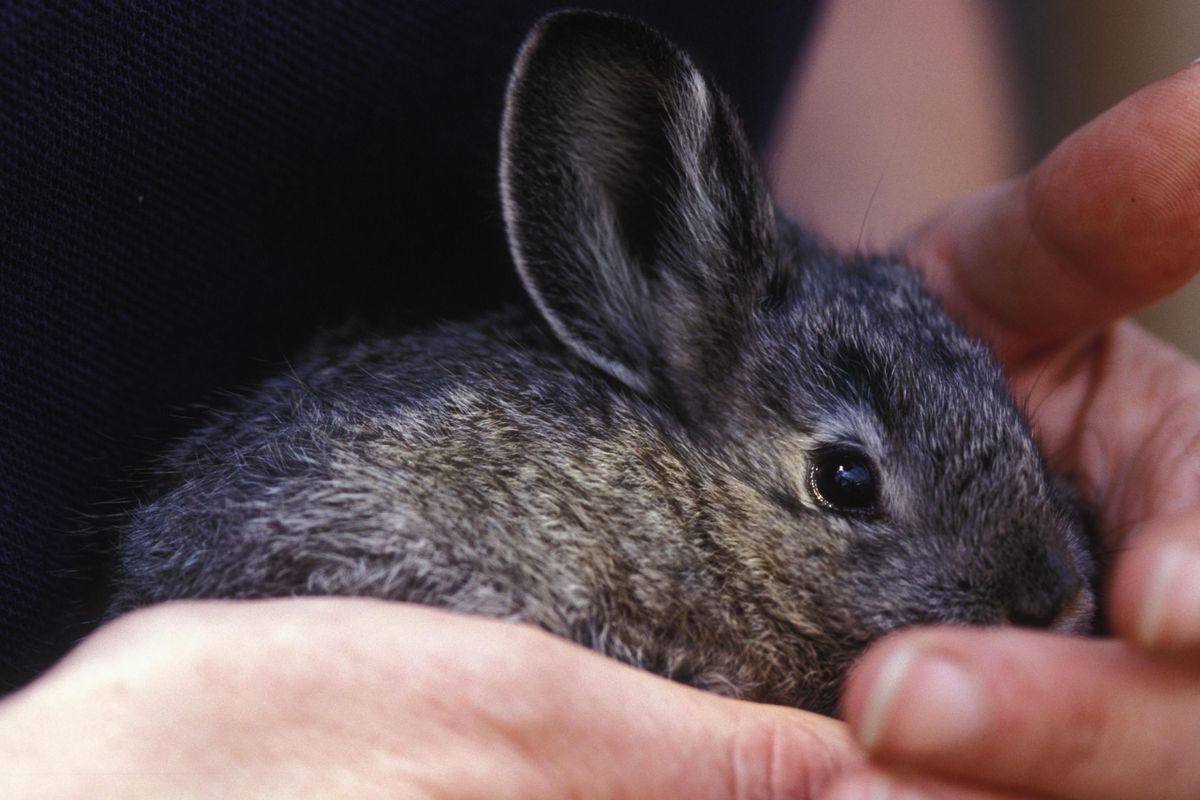Feds say pygmy rabbits remain endangered

Threats to the survival of the endangered Columbia Basin pygmy rabbit have increased in the past five years, in part because the tiny animals are not breeding enough, the U.S. Fish and Wildlife Service said Wednesday.
While the agency last month declined to list the pygmy rabbit as endangered in most western states, the Columbia Basin population in Eastern Washington is distinct and faces serious threats. It was listed as an endangered species under emergency provisions in 2001 and fully listed in 2003.
In its five-year review of aggressive efforts to save the species, the agency found the Columbia Basin rabbits face increased risk from disease in captivity; are getting used to captive conditions that make them less capable of surviving in the wild; and face loss of genetic uniqueness due to interbreeding.
The last known wild population of Columbia Basin pygmy rabbits was believed to be extinct by mid-2004.
“We don’t know of any animals in the wild, but there is a whole lot of ground that hasn’t been surveyed,” said Chris Warren of the FWS in Spokane.
The remaining members of the distinct population are housed at the Oregon Zoo, Northwest Trek and Washington State University, the agency said. Those animals are inbred and scientists have been trying to mate them with pygmy rabbits from elsewhere, Warren said.
But initial efforts to use artificial insemination and Viagra-style stimulants haven’t worked. And conventional mating is difficult because female rabbits will only briefly tolerate the presence of males, and often fight with them, Warren said.
“Sometimes the female beats up the male,” Warren said.
Even when mating is successful, many infant rabbits have been dying from diseases carried in soils that the rabbits burrow into and use as nests, he said.
“They can’t breed without burrows,” he said.
It’s a different story for pygmy rabbits in other states. Last month, the agency rejected extending endangered species protection to pygmy rabbits in California, Nevada, Oregon, Idaho, Utah, Wyoming and Montana, saying their survival was not threatened.
Environmental groups approved of the decision.
“The Columbia Basin pygmy rabbit is one of the most endangered mammals in North America,” said Noah Greenwald, endangered species director at the Center for Biological Diversity in Portland, Ore. He said the agency should extend the protection to pygmy rabbits in other western states also.
In 2007, twenty captive-bred pygmy rabbits were reintroduced in the basin, but were almost immediately consumed by predators.
The agency is considering a second release of pygmy rabbits, but would include many more rabbits from other areas in an effort to increase the survival rate, Warren said.
The pygmy rabbit is the smallest rabbit in North America, and can fit in a man’s hand. Adults weigh about one pound and measure less than a foot in length. It is one of only two rabbit species in North America that digs its own burrows, and lives in areas of deep, loose soil.
Historically, the rabbit lived in shrub-steppe habitat in portions of Douglas, Grant, Lincoln, Adams, Franklin, and Benton counties in Washington. The Columbia Basin rabbits have been isolated from other populations for at least 10,000 years, as suggested by the fossil record and genetic analyses.
AP-WF-10-27-10 2217GMT